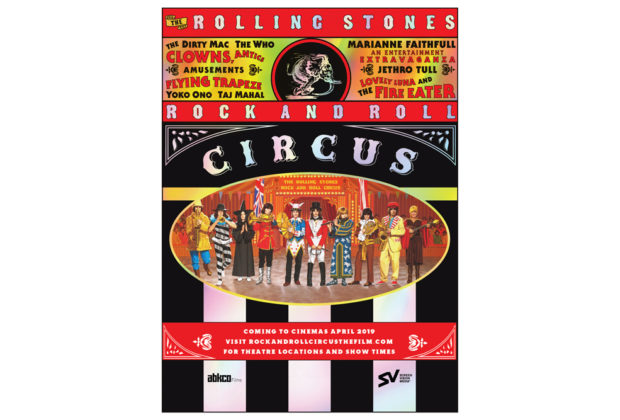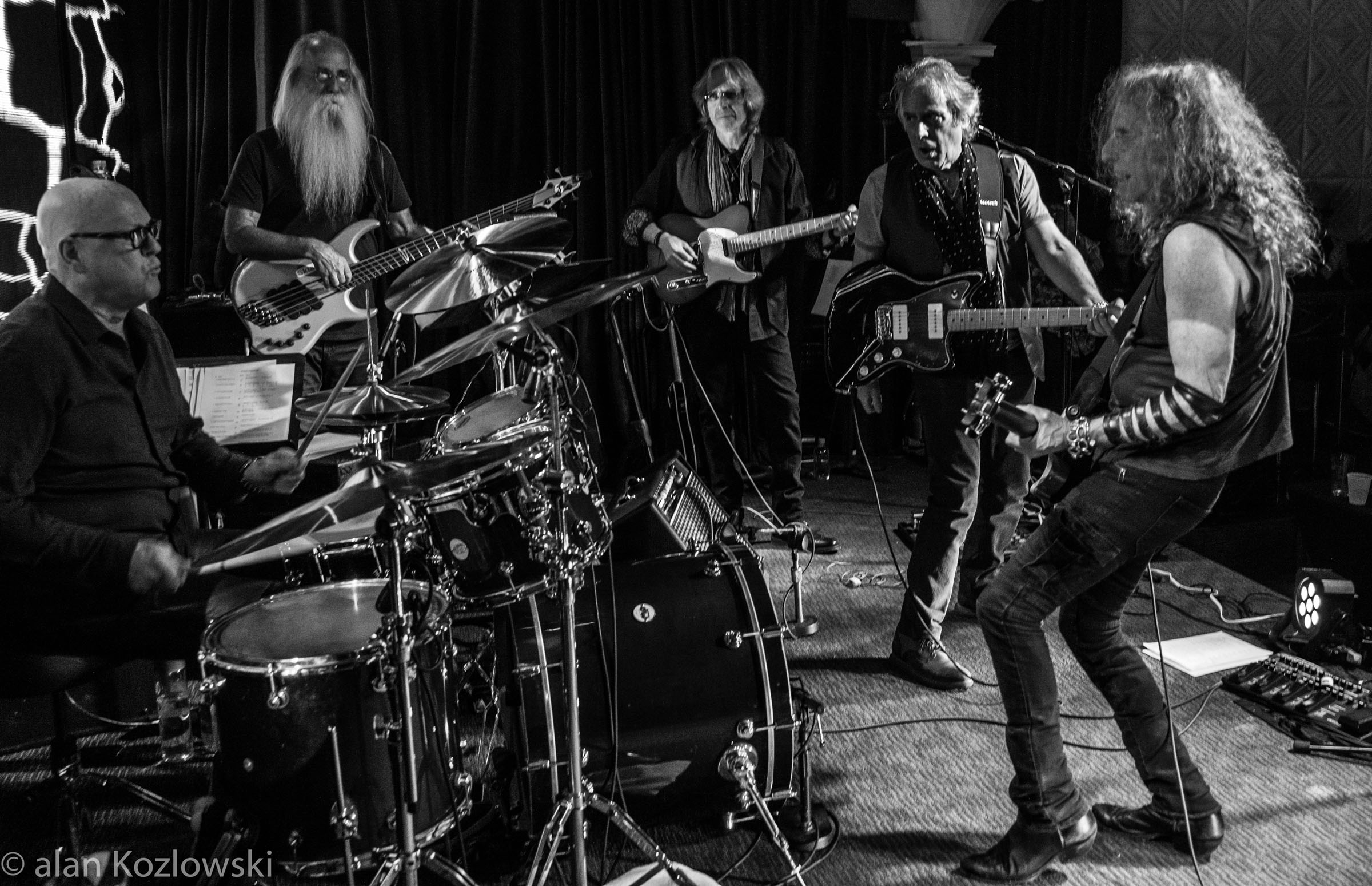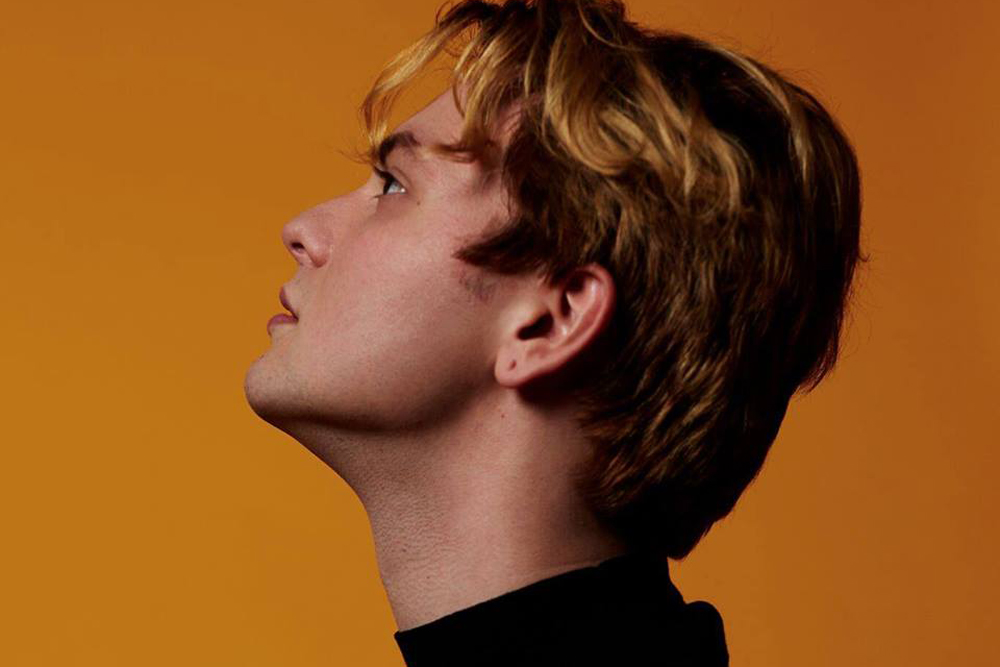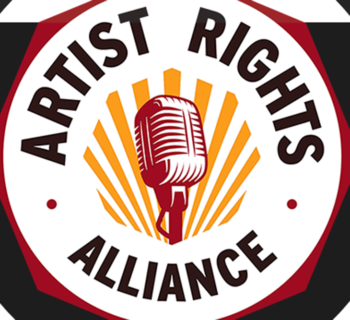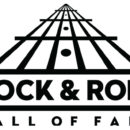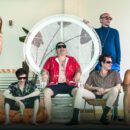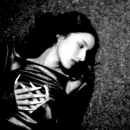ABKCO Films have planned theatrical screenings of The Rolling Stones Rock and Roll Circus in April.
On Thursday, March 7 in Hollywood a special viewing of the film was held at the Dolby Screening Room followed by a Q&A with film director Sir Michael Lindsay-Hogg in conversation with The Rolling Stones Crossfire Hurricane director Brett Morgan.
Lindsay-Hogg is the director of the Beatles’ Let It Be.
The film showcases the original line up of The Rolling Stones -- Mick Jagger, Keith Richards, Brian Jones, Charlie Watts, Bill Wyman (with Nicky Hopkins and Rocky Dijon)-- who serve as both the show’s hosts and featured attraction.
For the first time in front of an audience, the band does six of their classics (“Jumpin’ Jack Flash,” “Parachute Woman,” “No Expectations,” “You Can’t Always Get What You Want,” “Sympathy For The Devil” and “Salt of The Earth.”)
The program also includes performances by The Who, Jethro Tull, Taj Mahal, Marianne Faithfull, Yoko Ono as well as The Dirty Mac a ‘supergroup’ before the term had even been coined the band was comprised of Eric Clapton (lead guitar), Keith Richards (bass), Mitch Mitchell of The Jimi Hendrix Experience (bass) and John Lennon on guitar and vocals.
This performance marks the first musical context in which John Lennon performed before an audience outside the Beatles. A mirthful conversation between Jagger and Lennon captures these two at a pivotal creative point in time. The Circus is the only time Tony Iommi (Black Sabbath) performed with Jethro Tull and the last time Brian Jones would perform with The Rolling Stones in front of an audience.
Michael Lindsay-Hogg, the acclaimed music video director who guided the landmark Ready, Steady, Go! music and dance television series during 1963-1966, filmed The Rolling Stones and their guests in Britain at a big top venue in Wembley. The shoot happened in 1968 on the 11th and 12th of December. The audience was comprised of The Rolling Stones fan club members, New Musical Express contest winners and a few American Hells Angels.
Envisioned as a BBC special, the project was shelved, but in the intervening 28 years it was regarded as “The Holy Grail” of rock films until the film finally saw the light of release in 1996 through ABKCO Films.
Critic/historian David Dalton reflected on the event in a 1996 article in The Independent: "The Rock and Roll Circus captures the delirious optimism of an era. Depending on your point of view, it was either the high point in the history of the cosmos, or a period of mass hallucination, or both. But call it what you will, for a brief moment it seemed that rock 'n' roll would inherit the earth."
“It was an incredible shoot, I think, 36 hours or something,” stated Keith Richards. “I remember not remembering everything towards the end... but it was fun… we went through two audiences… wore one out… it was great!”
It will be the first concert film to be presented in both Dolby Vision and Dolby Atmos sound. The film’s 4K restoration was sourced from the 35mm internegative and, for the first time, presented in wide screen format (16:9 for home and 1:85 for theatrical showings supervised by original cinematographer Tony Richmond).
Richmond is the veteran cinematographer whose feature film credits include The Kids Are Alright featuring The Who, The Man Who Fell To Earth starring David Bowie, and Jean-Luc Godard’s Sympathy For The Devil, a restored version ABKCO Films release.
Before capturing The Rock and Roll Circus on celluloid, director Michael Lindsay-Hogg had helmed many of The Rolling Stones’ promotional video clips: “She’s a Rainbow,” “2000 Light Years From Home,” “Child of the Moon,” and “Jumpin’ Jack Flash,” as well as The Beatles’ “Paperback Writer,” “Rain,” “Hey Jude” and “Revolution.”
Lindsay-Hogg is the pioneering music video director behind The Beatles’ Let It Be feature film and many of The Rolling Stones’ seminal video clips. During the course of his career, he has directed specials for Simon and Garfunkel, Neil Young, Paul Simon and The Who.
Michael Lindsay-Hogg is the author of the well received 2011 autobiography Luck and Circumstance: A Coming of Age in Hollywood, New York and Points Beyond.
Lindsay-Hogg is the son of the acclaimed actress Geraldine Fitzgerald, who starred as Marilyn Birchfield in the drama The Pawnbroker directed by Sidney Lumet.
Like visionary director/producer Jack Good before him, both studied at Oxford, Michael Lindsay-Hogg viewed and lensed rock ‘n’ roll as a dramatic subject. Michael’s first job, at age 16, was serving as an apprentice for John Houseman’s repertory theatre company in Stratford, Connecticut.
“I started out as a child actor and fell in love with the theater,” Michael told me in a 2019 interview. “The first jobs I had were in Shakespeare on stage. And that’s how it started and I tried very much to bring some of those elements to Ready, Steady Go!”
This landmark British music programme was broadcast every Friday night debuting August 9, 1963 and a final taping December 23, 1966.
RSG! was conceived by Elkan Allan, then head of Rediffusion TV. Vicki Wickham assembled the talent and dancers and served as one of the producers. After 1964 the live show was aired nationally on network. The program was recorded at the RSG! studio in Rediffusion’s headquarters in Kingsway, London.
RSG! gave a platform to some of the most successful recording artists of the sixties: The Who, Otis Redding, The Animals, Gene Pitney, The Zombies, Sandie Shaw, The Beatles, Burt Bacharach, The Stones, The Temptations, Donovan, The Kinks, James Brown, The Fortunes and The Walker Brothers.
Initially, the musical guests on RSG! mimed to their pre-recorded tracks, by late 1964 some artists performed live and eventually all acts to all-live performances in April 1965. The hosts/presenters were Keith Fordyce and Cathy McGowan. Early shows were introduced by singer Dusty Springfield.
“It was a black and white program,” reinforced Michael. “A lot of the great comedies and dramas from the forties and fifties were in black and white. In England we had no color.
“I had no worries from the people above me. Elkan Allen was the creator and always encouraged me to go further. Very helpful.
“And I think people were stunned by the comparative substance of the rock ‘n’ roll that was on television,” Lindsay-Hogg underscored.
“1963 was a revolution. It was the kids who had been children in World War 2. The world was opening up for them. They could have long hair if they wanted too. And it was the discovery of the pill for pregnancy. And so a whole nation was open for young people and freedom. There was long hair, the pill and music. The paper was ready to be lit and the match came,” ventured Lindsay-Hogg, who along with John Lennon, Andrew Loog Oldham, Vicki Wickham, Mick Jagger and other bold Brits embodied the confidence of a new London.
“There were new managers in rock ‘n’ roll and around Ready, Steady Go! Don Arden, Andrew Loog Oldham, and Kit Lambert and Chris Stamp, had been assistant stage managers or involved in acting.”
“In 1963 I was working. RSG! represented the time when we were in the business we wanted to be in and RSG! on a Friday night the Green Room was the meeting place of all those similarly blessed,” Andrew Loog Oldham recalled to me in my 2004 book, Hollywood Shack Job: Rock Music In Film and on Your Screen.
“Vicki Wickham booked the show from late 1963 to December 1967. Michael Lindsay-Hogg directed it, and tried new techniques like stop action and freeze frame while the band was on camera.
“Save to say I still communicate with both of them so that tells you the lot. You were dealing with nice people. None of the people had an agenda. On the show, the visuals propelled the music.”
“On RSG! Andrew had some ideas about lighting and shots,” offered Lindsay-Hogg. “One evening at the Ad Lib club I met up with Andrew and we agreed to debut a couple of new songs he was hyped about, including ‘Satisfaction.’”
“When The Stones did ‘Paint, It Black,’ we put camera effects on Mick’s face and made it darker and darker,” emphasized Lindsay-Hogg. “We were broadcasting live. It felt dangerous and primitive.
“The cameraman, Bruce Gowers, later did the great video of Queen’s ‘Bohemian Rhapsody,’ which was a very calculated video.
“With RSG! it was about as much about the technique as the performer. In the early RSG! stages I was always thinking about the performer and somehow marrying the technique to them. If the performer was Mick Jagger and John Lennon you don’t want to get in the way too much.
“Mick is a very bright person and he always has been,” observed Lindsay-Hogg. “And Mick, when was a younger man was as keen to know what was going on in the world. He read a lot. Or at least he said he did. And was into movies, and Andrew was very much interested in movies and presentation.
“He had been trying to figure out how to make a movie with The Rolling Stones, which Mick and Keith were interested in. Because in those days, even though rock ‘n’ roll was coming to mean what it came to mean, movies were still sort of the art form going back to comedies. So Andrew was always trying to find a book or a script. And Mick went on to act in Performance and Ned Kelly.
“RSG! went off the air in 1966 when the video was music promotion for the record to be out. 1967 was a difficult year for the Rolling Stones. The set-up drug arrest in Redlands. Touring was becoming a headache.
“In 1966 I had done earlier videos of the Beatles’ ‘Rain,’ and ‘Paperback Rider.” And Mick knew that. And it always was between The Beatles and The Rolling Stones,” admitted Lindsay-Hogg.
“The music video had been around. There were earlier attempts. Scopitone. [A jukebox 16 mm film]. The first Scopitone ones were made in French. Lip-sync to a pre-recorded track. Used to be seen in bars or in diners with French acts [Serge Gainsbourg, Johnny Hallyday] miming to rock ‘n’ roll videos.
“There was Dick Clark‘s American Bandstand. I used to watch it in the fifties, Jack Good, the wonderful producer and director of Shindig! and Hullabaloo.
“Mick was always thinking of the next step. ‘Because we can.’ That is to say ‘we’re strong enough and powerful enough like The Beatles are. And this is the way to get our song out to most of the plug shows who were gonna play it. Because they want the Rolling Stones. What do we do? How can we do it?’ And I asked what song they had. ‘Jumpin’ Jack Flash.’ ‘OK. Let’s hear it.’
“And we went out on a Saturday and we did it and then another version of it. And Brian Jones went over to the makeup table and started messing around with makeup and I said to Keith ‘Go over there.’ And, after a while they got into it.
“Makeup made a difference. It had a different quality to the first one. In fact, we went with the second one. They liked it a lot, and that helped to my ongoing life with the Rolling Stones.
“I don’t know what Mick was like as a student, and I know he got into LSE but he’s smart and he never wanted to be not able to keep up with the conversation about the arts, politics or anything.
“And so did we know what was gonna happen to rock ‘n’ roll in the sense that we know that it was ultimately going to blast through the roof? We thought it would.
“And he thought ‘let’s see what can happen with visual presentation of rock and roll.’ Which as you know ended up on MTV and generation 2. But when we were doing ‘Child of the Moon.’ Mick and I talked about it,” acknowledged Michael.
“Mick was open to anything that would take it a step further for them. And then we got there. He was miming. And I said, ‘Let’s try this and not mime. Let’s just create a little scenario.
“As for The Rock and Roll Circus, I had this idea that I really didn’t want to do a regular performance clip, because we had done that thing before. And I thought it would be interesting if we could put The Rolling Stones in a location which was not a rock ‘n’ roll location. And maybe add a couple of ingredients like three others characters. It was to be done in an unconventional carnival circus-like setting. I drew up a circle on a piece of paper.”
“Michael Lindsay-Hogg . . . is a very creative guy,” added Mick Jagger. “We came up with this idea and the whole idea, obviously, is to make it a mixture of different music acts and circus acts, taking it out of the normal and making it slightly surreal . . . mixing the two up. And also we wanted as many different kinds of music as possible. So that’s why we thought about who would be the best kind of supporting acts.”
One of the highlights of The Rolling Stones Rock and Roll Circus is Marianne Faithfull singing “Something Better,” a Barry Mann and Gerry Goffin tune, arranged by Jack Nitzsche and produced by Mick Jagger. Charlie Watts introduces Faithfull on screen.
I asked Lindsay-Hogg about Marianne’s sequence in the film and his sweeping directorial pan displayed.
“It goes back to the song,” he stated. “It goes back to Marianne and the years when she and Mick were going out together. She was a beautiful girl with a lovely figure. And she was the only girl except for Yoko Ono.
“Marianne appeared and I thought ‘this has to be about her and the camera work.’ A one of a kind beauty. And the way Tony Richmond lit her with her hair on her face. She was a beautiful young woman. It was partly celebrating her. And, then there is that long musical break where the camera circles around and ‘what would we cut away too?’ And so I thought ‘let’s do the unusual thing of just holding on her when she is not singing. Just move the camera around.
“I also wanted contrast with her because there were a lot of men on the show. Everyone on the show, except for Yoko, were guys. At the time there weren’t a lot of women in the rock ‘n’ roll world yet. There was wonderful Dusty Springfield, but mainly guys.”
In a July 28, 2014 interview with Robert Ayers in Rural Intelligence, Michael Lindsay-Hogg reflected about The Rock and Roll Circus.
“I still have a very soft spot for it.
“It has a poignancy to it. When you’re 28 you can’t imagine you’ll ever be 70, not can you imagine that some of the participants in the movie will soon be dead-in Brian Jones’ case in only five months, in Keith Moon’s in less than ten years, and in John Lennon’s in twelve years-because everybody seemed so incredibly alive, and so in the moment. There wasn’t any future, there was just now.”
The 50th Anniversary edition of Rock and Roll Circus was produced by ABKCO’s Robin Klein and Mick Gochanour, the GRAMMY® award winning team behind Sam Cooke: Legend and (The Rolling Stones) Charlie Is My Darling – Ireland 1965. Gochanour noted, “Watching it in widescreen is like seeing a whole new film at times with amazing intimacy and detail.”
Greg Penny, a celebrated immersive audio consultant reiterated “Dolby Atmos provides the listener with the most comprehensive experience that exists today. The objective was to give the listener the most realistic, immersive Rock and Roll Circus to date. It’s as if you were in that tent with The Rolling Stones, The Who, Taj Mahal, John Lennon, Jethro Tull and Marianne Faithfull, and you were part of the audience there fifty years ago.”
It can be said that what Dolby Atmos does for sound, Dolby Vision does for visuals. Dolby Vision is an advanced HDR technology that delivers enhanced contrast, detail and dimensionality to the screen by empowering every pixel with a much broader range of color and brightness. Both of these technologies have never before been applied to a concert film simultaneously, making The Rolling Stones Rock and Roll Circus a first of its kind.
I asked Michael about the DVD format, the inclusion of bonus tracks and/or implementation of director commentary added to the initial retail configurations and products we coveted and collected the last half century.
Did he ever feel an audio dialogue track dilutes and lessens the mystique of his innovative work?
“That’s a real good question. As for DVD, bonus tracks, and interview sessions as long the questions are intelligent. And if the person has one a little research. I do it mainly because it was at the beginning when certain ideas and techniques which completely taken hold of the culture where it was a formative kind of birth period. There really hadn’t been done before except for Scopitone and some studios in America, but not very well done.
“When I worked with The Beatles and The Rolling Stones they were really the first videos which tried to take the form a little further. Like The Beatles playing out in the fields. Following me was a long line of very interesting visual attempts with music.”
Currently the BMG Company is preparing a comprehensive book on Ready, Steady Go! that is being written by Andy Neil, a respected music journalist. Michael has done an interview for it.
In the last quarter of 2019, expect via Apple Corps, a 50th anniversary original edition of The Beatles’ Let It Be Lindsay-Hogg directed in 1969.
HARVEY KUBERNIK is the author of 15 books, including heralded titles on Leonard Cohen and Neil Young. His 2017 volume, the acclaimed 1967 A Complete Rock History of the Summer of Love was published by Sterling/Barnes and Noble. Inside Cave Hollywood: The Harvey Kubernik Music InnerViews and InterViews Collection, Vol. 1 was published in December 2017, by Cave Hollywood. Kubernik’s The Doors Summer’s Gone was published by Other Cottage Industries in March 2018.
Harvey’s The Doors: Summer's Gone has been nominated for the 2019 Association for Recorded Sound Collections Awards for Excellence in Historical Recorded Sound Research.
In November 2018, Sterling/Barnes and Noble published Harvey’s book, The Story of The Band From Pig Pink to The Last Waltz, written with brother Kenneth Kubernik.
This century Harvey penned the liner note booklets to the CD re-releases of Carole King’s Tapestry, Allen Ginsberg’s Kaddish, Elvis Presley The ’68 Comeback Special and The Ramones’ End of the Century.
In November 2006, Harvey Kubernik was a featured speaker discussing audiotape preservation and archiving at special hearings called by The Library of Congress and held in Hollywood, California).

